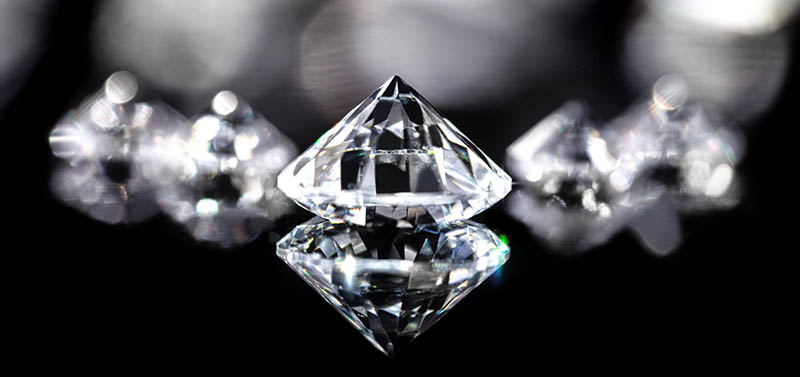Diamond name is derived from the Greek word “adamas”, which translates to “unconquerable.”
What is a diamond?
There are many views about diamonds. Most people think of a diamond as a beautiful gemstone used to make beautiful jewelry. We explain what your diamond really is?
Technically
Diamond is an allotrope, or a form, of the element carbon (a diamond is actually carbon in its most concentrated form). Within a diamond, the carbon atoms are arranged in a variation of the face-centered cubic crystal structure called a diamond lattice. This arrangement of carbon atoms essentially means that the diamond expands outward at the same rate in all directions during its initial growth.
Diamond is the most concentrated form of pure carbon in the natural world and the strongest mineral on Earth, far exceeding other carbon allotropes such as graphite and fullerite. The secret to diamond’s superior strength is found on the molecular level. Carbon atoms possess four valence electrons available for bonding. In diamond crystals, each of those four free electrons forms a covalent bond with a valence electron of a neighboring carbon atom. Since all of the free electrons are bonded uniformly, it creates a rigid tetrahedral lattice that gives the coveted mineral its prized properties.
Generally we can say
A very hard nearly colorless stone that is a form of carbon and is used especially in jewelry.
History
The earliest diamonds were found in India in 4th century BC, although the youngest of these deposits were formed 900 million years ago. A majority of these early stones were transported along the network of trade routes that connected India and China, commonly known as the Silk Road. At the time of their discovery, diamonds were valued because of their strength and brilliance, and for their ability to refract light and engrave metal. Diamonds were worn as adornments, used as cutting tools, served as a talisman to ward off evil, and were believed to provide protection in battle. In the Dark Ages, diamonds were also used as a medical aid and were thought to cure illness and heal wounds when ingested.
Diamonds have been treasured as gemstones since their use as religious icons in ancient India. Their usage in engraving tools also dates to early human history. The popularity of diamonds has risen since the 19th century because of increased supply, improved cutting and polishing growth in the world economy, and innovative and successful advertising campaigns techniques.
Natural history
The formation of natural diamond requires very specific conditions—exposure of carbon-bearing materials to high pressure, ranging approximately between 45 and 60 kilobars, but at a comparatively low temperature range between approximately 900 and 1,300 °C (1,650 and 2,370 °F). These conditions are met in two places on Earth, in the lithospheric mantle below relatively stable continental plates, and at the site of a meteorite strike.
A type of diamond known as carbonado, found primarily in Africa and South America, is believed to have been deposited on the Earth through an asteroid impact about three billion years ago. There is no scientific consensus on how carbonado diamonds originated, but many believe these diamonds formed in outer space before crashing to Earth.
For more information, visit diamondhedge.com. Diamond Hedge is the first diamond price comparison site for mobile, tablet and desktop.
Subscribe for free to receive new blog posts.
